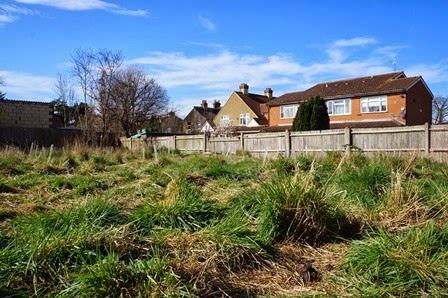This was a section of the park that was a little unloved, and was previously dominated by Japanese knotweed. It had been thought that the use of herbicide had successfully killed this most hardy of plants, but sadly a small node was found just starting to shoot skyward. This was dug up and left on a dry surface, hopefully to dry out.
The newly planted hedge will hopefully fill the space left by the knotweed to create a natural barrier to protect neighbouring properties from trespassers, and provide additional habitat for wildlife. We shall, of course, be back to check on the progress of the plants, and next year the aim will be to plant more hedge and make use of more coppiced materials.
Today we were joined by a local photographer, Paul Franklin, who with an artistic eye for detail helped to give the project a different perspective than usual. Except where stated, all today's photos were taken by Paul. Our young Duke of Edinburgh photographer, Ashleigh, also did an excellent job of capturing the coming of spring.
Although relatively small, the woodland at Lampton Park has a good variety of species.
Chris explains the basics of hedge planting and care.
Next, a course in how to build a dead hedge.
Volunteers collect hazel poles and binders for use in the dead hedge.
Hazel catkins are some of the first tree flowers to emerge in early spring.
Hazel ripe for coppicing. (Photo by Ashleigh)
Volunteers get busy building the dead hedge.
The hedge quickly takes shape.
A row of tree guards protect the newly planted living hedge.
A horse grazes nearby.
Although we're on the edge of an urban park not far from Heathrow Airport, you're never far from nature.
Hawthorn leaves are beginning to appear. (Photo by Ashleigh)
Along with goat willow. (Photo by Ashleigh)
And, dogwood. (Photo by Ashleigh)
We thought the Japanese knotweed had been successfully killed. (Photo by Ashleigh)
Japanese knotweed making a final stand. (Photo by Chris)
Sadly Lampton Park isn't immune to inconsiderate homeowners dumping their rubbish in the public park. (Photo by Chris)
Red dead nettles add a splash of colour (Photo by Chris)










































